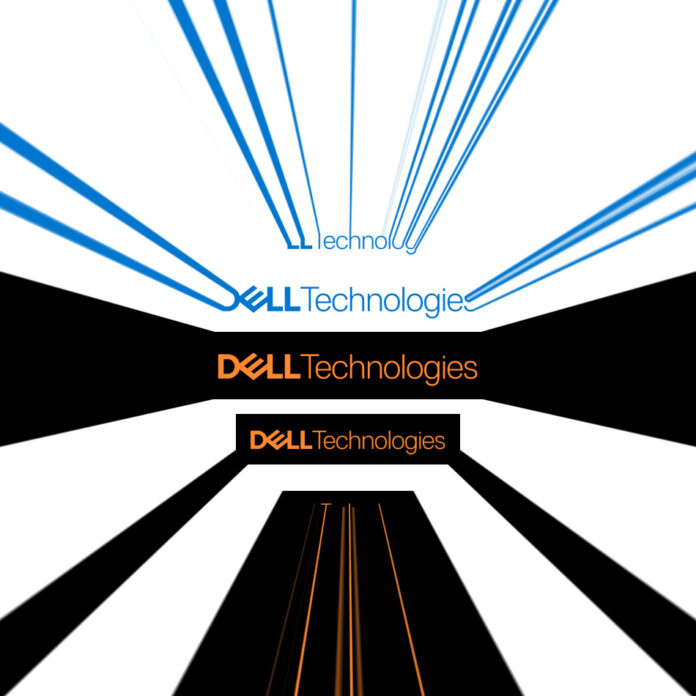Storage market leader Dell has updated four of its block, file, and backup storage product lines with higher-capacity SSDs and stronger cyber-resilience.
The company says these updated arrays and appliances are part of its on-premises private cloud offerings. The Dell Automation Platform software provides automated delivery of these products, with pre-built, tested configurations for software stack deployments (e.g. VMware vSphere, PowerStore) on Dell hardware, eliminating manual installation. There are on-prem and SaaS deployment options. Dell Native Edge is integrated into the Automation Platform, providing a full-stack, end-to-end offering supporting virtualized and containerized workloads. Dell says this is optimized to simplify and secure operations across distributed cloud and edge environments.

Dell’s Travis Vigil, SVP for ISG Product Management, stated: “Our latest storage and cyber resilience advancements are designed to help organizations build private clouds that are smarter, more secure, and ready to handle the demands of both traditional and modern workloads.”
Early next year, Dell Private Cloud will expand to support Nutanix with a fully integrated offering built on disaggregated infrastructure.
PowerMax
This is Dell’s high-end, mission-critical data storage array. Dell says it now gets up to 250 percent more performance, basing this on its internal analysis of updating the new PowerMaxOS 10.3 software with a single click. More realistically, there is up to 25 percent more IOPS performance on both PowerMax 2500 and 8500 systems from software changes.
There is QLC (4 bits/cell) SSD support with 122 TB SSDs (10 drive minimum) for the PowerMax 2500, and it can scale out at the single-drive level to 8.8 PB effective capacity per array. Dell says there is a new cache-centric architecture and innovative write-folding techniques to extend QLC flash durability
Security has been improved with single sign-on Entra ID and encrypted email alerts. Admin life is made easier with single-click software updates, which complete in under six seconds, zero-touch management installs, and up to 66 percent fewer steps when setting up replication mode changes.
There is a Workload Planning Dashboard, through which admins can gain predictive insights with “what-if” simulations and detailed visibility into performance and capacity usage across multiple PowerMax arrays.
PowerMaxOS 10.3 upgrades are free and non-disruptive for existing customers with a Dell service contract.
PowerStore
PowerStore sits underneath PowerMax in Dell’s storage array range, being a dual-controller, unified file and block storage array line, extending from the entry-level 500T and 500T DC through the 1200T, 3200T, 3200Q, and 5200T to the range-topping 9200T. A new 5200Q model – Q for QLC – supports high-capacity QLC flash drives, scaling up to 25 PB effective capacity per cluster (assuming 5:1 dedupe ratio). This compares to the 5200T’s 23.6 PB effective capacity per cluster – not that much different, but lower cost. Dell says customers can have better optimized workload placement through integrating the 5200Q with existing PowerStore clusters.
PowerStore arrays are also getting built-in anomaly detection, single sign-on and biometric authentication, HashiCorp key manager support, and replication over Fibre Channel. Smart Support Auto-Heal functionality with automated health checks and repairs will cut issue resolution time by up to 90 percent.
Dell and hyperconverged infrastructure (HCI) software vendor Nutanix already support Nutanix software running on PowerFlex arrays. This partnership is being extended to PowerStore. Thomas Cornely, SVP Product Management at Nutanix, said: “With our Nutanix Cloud Platform soon supporting Dell PowerStore, we will be giving customers a new choice in how they architect their virtualized environments.”
PowerFlex Ultra
PowerFlex is containerized block storage software and the codebase for APEX Block Storage. Dell says that its PowerFlex Ultra release has a Scalable Availability Engine with a scale-out, distributed, erasure-coded architecture. It achieves up to 80 percent storage efficiency, with over 50 percent reduction in physical storage footprint. The system can tolerate the loss of two nodes at once, achieves ten nines (99.99999999 percent) data availability, and reduces costs.
We’re told that parallel processing across nodes delivers sub-millisecond latency and enterprise-class throughput for demanding workloads.
PowerProtect
This is Dell’s deduping backup target appliance range, available as a hardware appliance and as a virtual appliance that can run in public clouds. The hardware appliance range runs from the new DD3410 entry-level model through the DD6410, DD9410, DD9910 to the DD9910F with generally increasing capacity and performance en route, although the DD9910F (Flash) has less maximum usable capacity – 35.4 PB – than the DD9910 with its 97.5 PB.
The DD3410’s usable capacity range is 8 to 32 TB and it is intended for use in remote offices and smaller environments.
There is a new software-defined PowerProtect Data Manager Appliance for centralized PowerProtect appliance admin, with improved protection, including anomaly detection and data immutability.
Availability and background information
Find out more by reading various Dell blogs:
- PowerStore – New Chapter in Choice: Dell PowerStore Coming to Nutanix
- Private Cloud – Is Your Storage Ready for Tomorrow’s Private Cloud?
- PowerFlex – End Storage Tradeoffs at Scale with PowerFlex and equivalent Nutanix blog
- PowerMax – Announcing PowerMaxOS 10.3: Raising the Bar for Mission-Critical Storage
- Cyber-resilience – Unbreakable Cyber Resilience: Supercharge Your Private Cloud
Availability:
- Dell Private Cloud and Dell NativeEdge integrated with the Dell Automation Platform is available today.
- Dell PowerStore 5200Q, PowerStore software PowerFlex and PowerMax updates will be available in October 2025.
- Dell PowerStore support for Nutanix will be available in early access in Spring 2026.
- Dell PowerProtect Data Domain DD3410 will be available in Q1 2026.
- Dell PowerProtect Data Manager Appliance will be available in Q4 2025.








